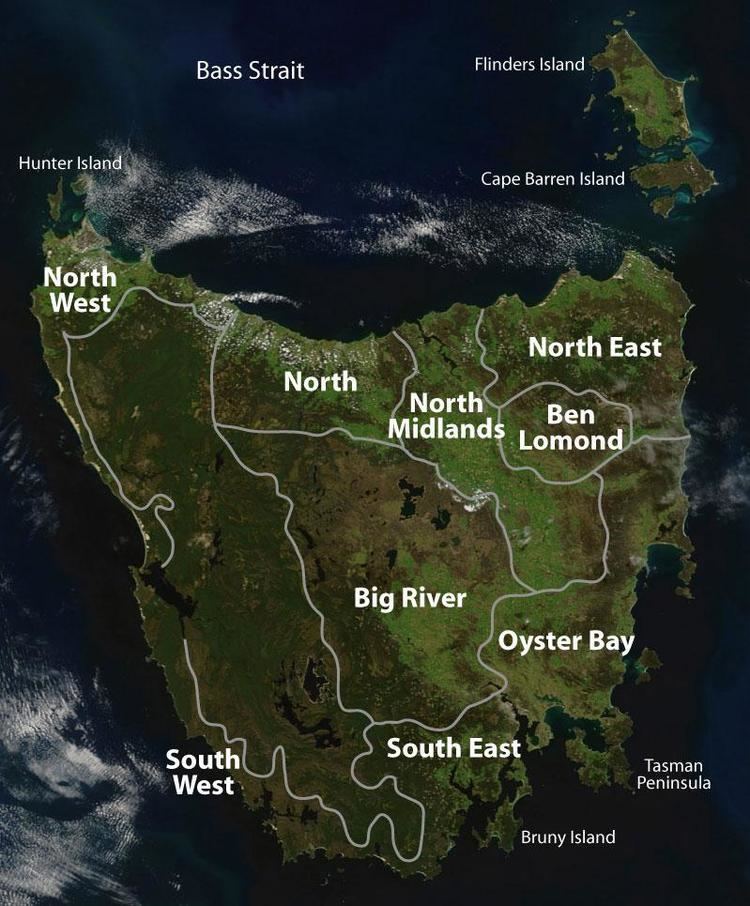Date 1999 ISO 639-3 None (mis) | Glottolog None | |
 | ||
Created by Theresa Sainty, Jenny Longey, Palawa community Purpose Language revivalPalawa Kani | ||
Palawa kani is a constructed language, a project to create a generic language that resembles the extinct languages once spoken by Aboriginal Tasmanians (Palawa).
Contents
History
The original Tasmanian languages became extinct in 1905 when the last native speaker died. As part of community efforts to retrieve as much of the original Tasmanian culture as possible, efforts are made to construct a language for the indigenous community. Due to the scarcity of records, Palawa kani is being constructed as a composite of the estimated dozen original languages.
Theresa Sainty and Jenny Longey were the first two "language workers" to work on the project in 1999.
State of the language
Developed in conjunction with the Tasmanian Aboriginal Centre, community ownership of the language is maintained for the time being. The language project is entirely community based and the language is not taught in state schools but at various after-school events, organised camps and trips. There is obvious enthusiasm for the language especially among younger people and an increasing number of people are able to use the language to some extent, some to great fluency. Lutana Spotswood gave a eulogy in palawa kani at the funeral of the Tasmanian Premier Jim Bacon.
Palawa kani is also used on a number of signs in Tasmanian National Parks and Kunanyi has been accepted as an official name for Mount Wellington and the Asbestos Range National Park is now known formally as Narawntapu National Park.
Some question the possibility of recreating a truly generic Tasmanian language, given that scholarly opinion has emphasised the lack of information on the original tongues. While the importance of those languages is acknowledged as a source of knowledge about the deep linguistic prehistory of the southern periphery of Australia, and hence of global linguistic prehistory, little information was gathered on Tasmanian languages before they ceased to be spoken at the end of the 19th century. It has also been suggested that the creation of palawa kani by one particular group is linked to a political and cultural dispute between two Tasmanian groups (the Palawa and the Lia Pootah), both claiming Aboriginal descent.
Grammar
Palawa kani is an isolating language with an SVO structure. It appears to have nouns, verbs and adjectives. Adjectives precede the noun and neither nouns nor adjectives are marked for number, e.g. nayri kati "good number(s)". Negations precede the verb, e.g. putiya makara "not stop".
No capital letters are used in native texts, but when used in English, place names such as Kunanyi are often capitalised.
Pronouns
The word mapali "many" doubles up as a plural suffix for some pronouns and possessives.
Possessive pronouns
Possessives follow the noun, for example milaythina mana "our land".
Possessives can take directional affixes such as -tu "to(wards)", e.g. mana-mapali-tu "to our" or -ta "on" e.g. nika-ta "on their".
Verbs
Other vocabulary
Place names
Numerals
The number system is decimal in nature and has no irregular forms. In composed numerals, stress falls onto the first numeral.
...
...
Phrases
Text samples
This sample is a eulogy by the Tasmanian Aboriginal Centre Language Program first used at the 2004 anniversary of the Risdon Cove massacre of 1804.
The second sample is from the interpretation boards in Kunanyi Park.
